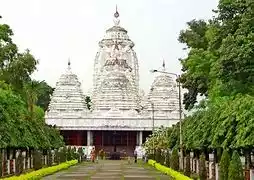Rayagada District: A Comprehensive Overview
Introduction
Rayagada, a district located in the southern part of Odisha, India, is a land of rich culture, diverse demographics, and scenic beauty. Known for its tribal heritage, Rayagada offers a blend of traditional and modern lifestyles. This article provides a detailed insight into the district's geography, culture, history, administration, and cuisine.
Geography of Rayagada
Rayagada is situated in the Eastern Ghats, characterized by its hilly terrain and dense forests. The district covers an area of approximately 7,584 square kilometers and is bordered by the districts of Koraput, Kalahandi, Nabarangpur, and Gajapati. The major rivers flowing through Rayagada are the Nagavali and the Vamsadhara, providing a lifeline for agriculture and daily life.
Natural Resources
Rayagada is rich in natural resources, particularly bauxite and graphite. The bauxite mines in Kodingamali and the graphite mines in the district contribute significantly to the economy. Additionally, the forests of Rayagada are home to a variety of flora and fauna, making it a biodiversity hotspot.
Demographics
Rayagada has a population of approximately 967,911 people, with a significant proportion belonging to various tribal communities such as the Kondh, Soura, and Jatapu. The district is known for its linguistic diversity, with languages like Odia, Telugu, Kui, and Desia spoken widely.
Tribal Communities
The tribal communities of Rayagada are integral to its cultural fabric. They have unique traditions, customs, and festivals. The Kondh tribe, for instance, is known for its Dongria Kondh subgroup, who live in the Niyamgiri hills and are renowned for their rich cultural heritage and sustainable lifestyle.
Culture and Traditions
Rayagada's culture is a vibrant tapestry of tribal and non-tribal elements. Festivals, dance forms, and rituals play a crucial role in the lives of the people.
Festivals
The district celebrates various festivals with great fervor. Dussehra, Diwali, and Holi are celebrated along with tribal festivals like Meria and Chaiti. These festivals often involve traditional music, dance, and rituals that reflect the district's rich cultural heritage.
Dance and Music
Traditional dance forms like Dhemsa and Ghumura are popular in Rayagada. These dances are usually performed during festivals and community gatherings, accompanied by traditional instruments like the dhol and changu.
History
Rayagada has a rich historical background, with evidence of human habitation dating back to ancient times. The region was part of the Kalinga kingdom and later came under the rule of various dynasties, including the Gajapati kings and the British colonial administration.
Historical Landmarks
The district is home to several historical landmarks, such as the Majhighariani Temple, which is dedicated to the goddess Majhighariani, the presiding deity of Rayagada. Other notable sites include the Paikapada Shrine and the Minajhola Temple.
Administration
Rayagada district is divided into eleven blocks for administrative purposes. The district administration is headed by a District Collector, who oversees the implementation of government policies and programs.
Key Administrative Divisions
- Rayagada Block: The central administrative unit, housing the district headquarters.
- Bissamcuttack Block: Known for its scenic beauty and tribal population.
- Gunupur Block: An important commercial and educational center.
Economy
The economy of Rayagada is primarily agrarian, with agriculture being the main occupation of the people. The district also has a significant industrial presence, particularly in the mining and manufacturing sectors.
Agriculture
The major crops grown in Rayagada include paddy, millet, maize, and pulses. The district's agriculture is heavily dependent on the monsoon rains, and efforts are being made to improve irrigation facilities.
Industry
Rayagada has several industries, including mining, paper mills, and agro-based industries. The JK Paper Mills in Jaykaypur is one of the largest employers in the district.
Cuisine
The cuisine of Rayagada reflects its diverse cultural influences. Traditional tribal dishes, as well as mainstream Odia cuisine, are popular in the district.
Traditional Dishes
- Mandia Jau: A nutritious porridge made from finger millet.
- Pakhala Bhata: Fermented rice served with an assortment of side dishes.
- Kangoi: A traditional dish made from bamboo shoots.
Education
Rayagada has made significant strides in education, with a number of schools, colleges, and vocational training institutes. The presence of institutions like the Gandhi Institute of Advanced Computer & Research (GIACR) has contributed to the district's educational development.
Transportation
Rayagada is well-connected by road and rail. The district has a major railway station, Rayagada Railway Station, which serves as a junction for several important routes. The road network connects Rayagada to major cities like Bhubaneswar, Visakhapatnam, and Raipur.
Conclusion
Rayagada is a district of contrasts, where tradition meets modernity, and natural beauty complements human endeavor. Its rich cultural heritage, diverse demographics, and economic potential make it a unique and vibrant part of Odisha. Whether it's the scenic landscapes, the vibrant festivals, or the industrious people, Rayagada offers a glimpse into the heart of India's tribal heritage and its journey towards development.
